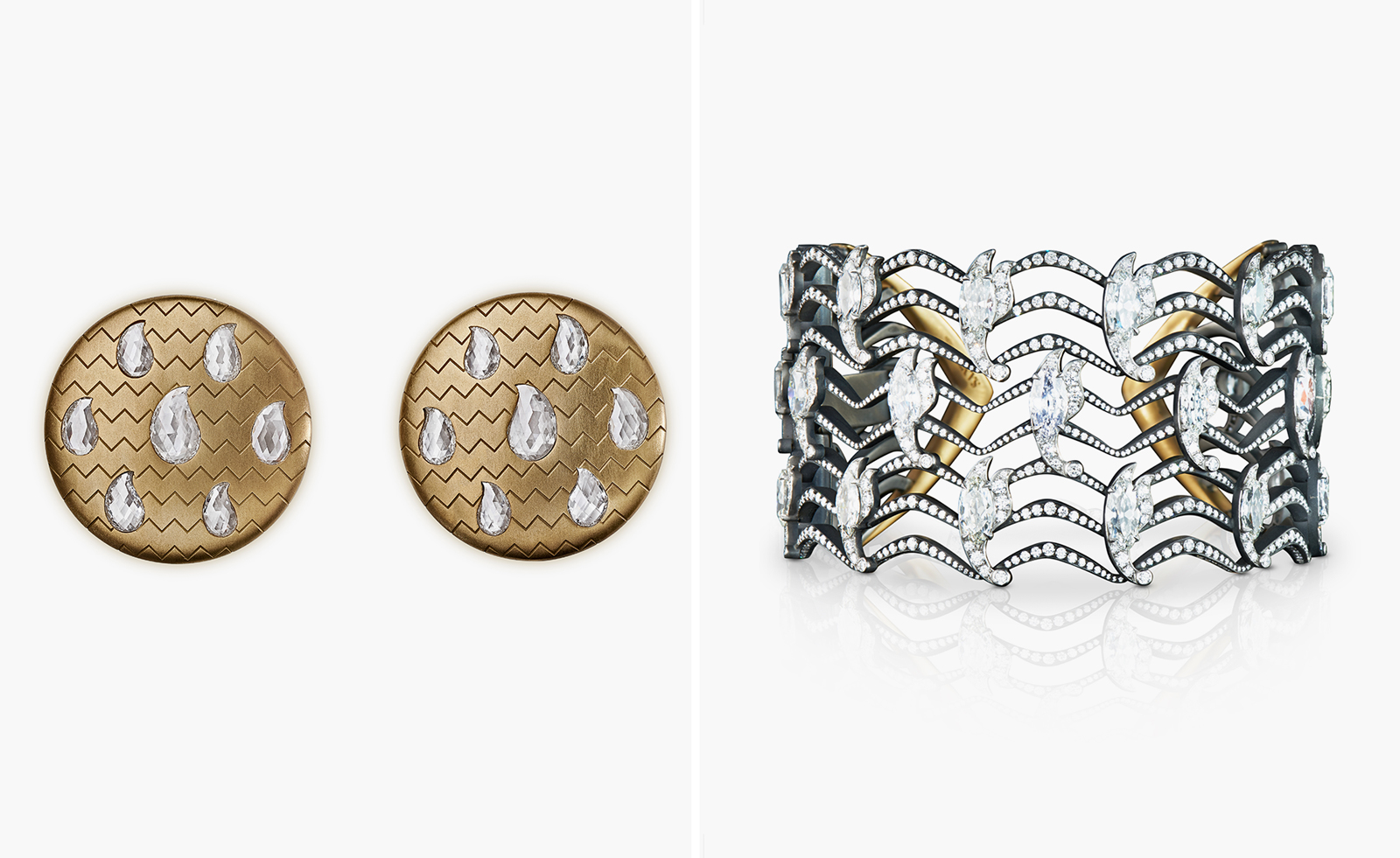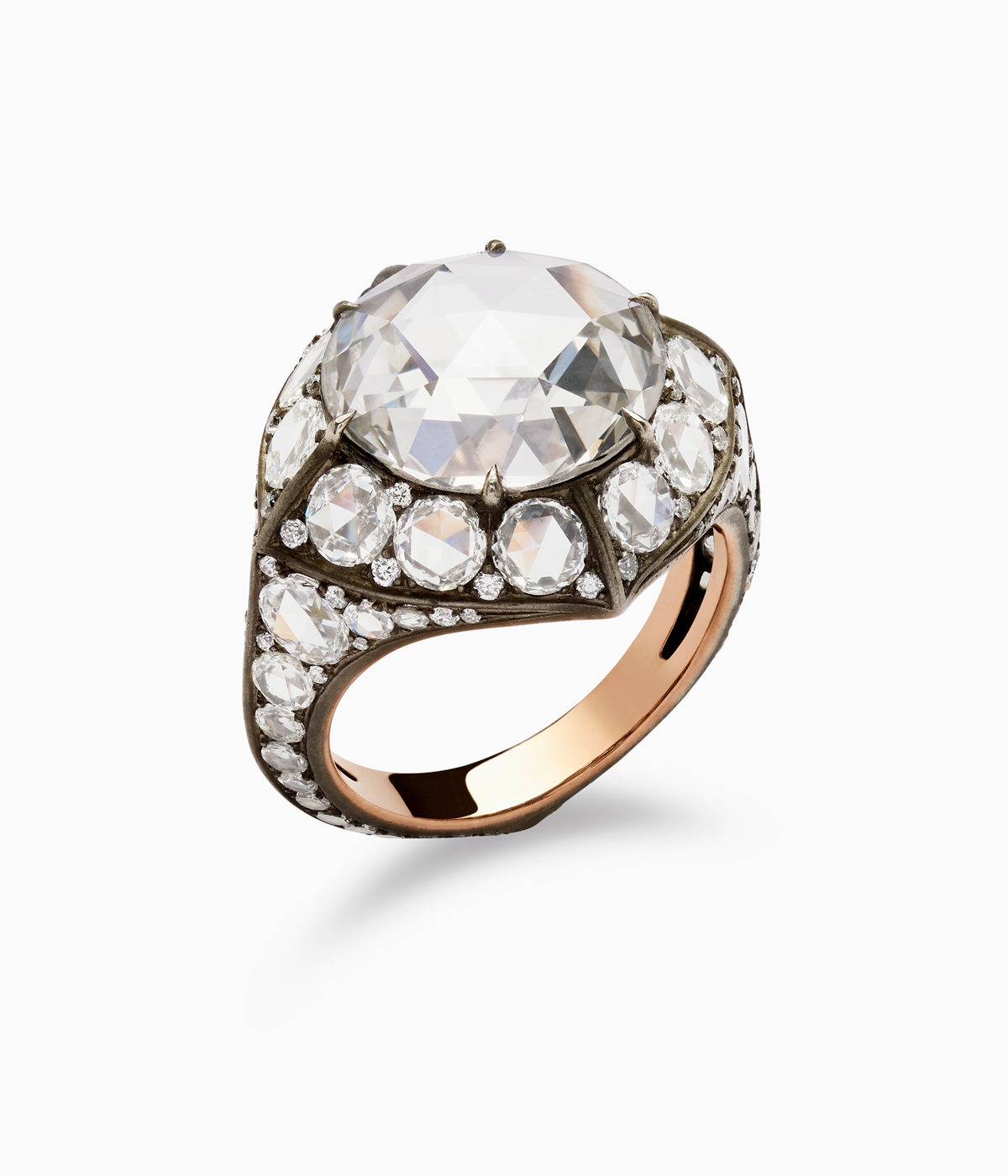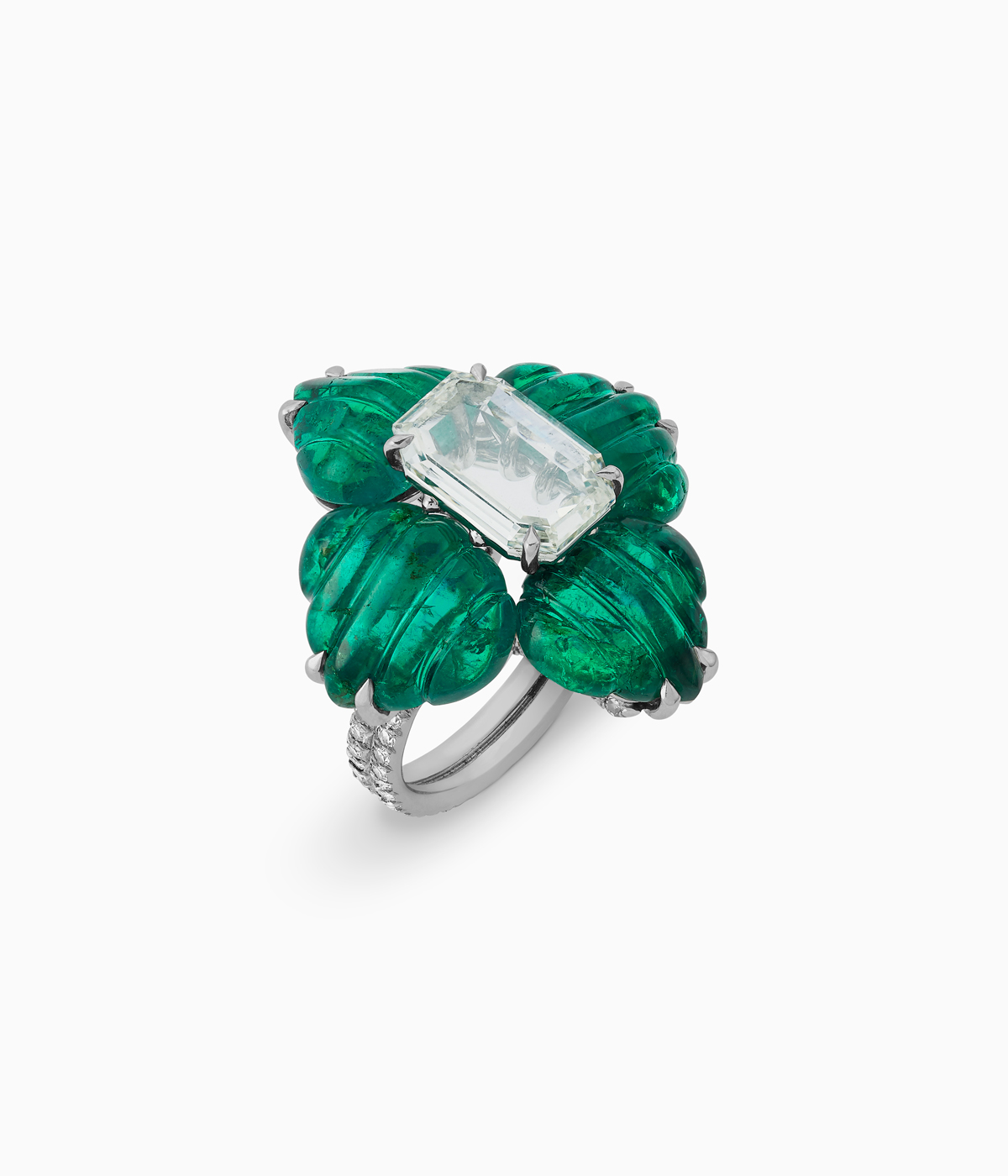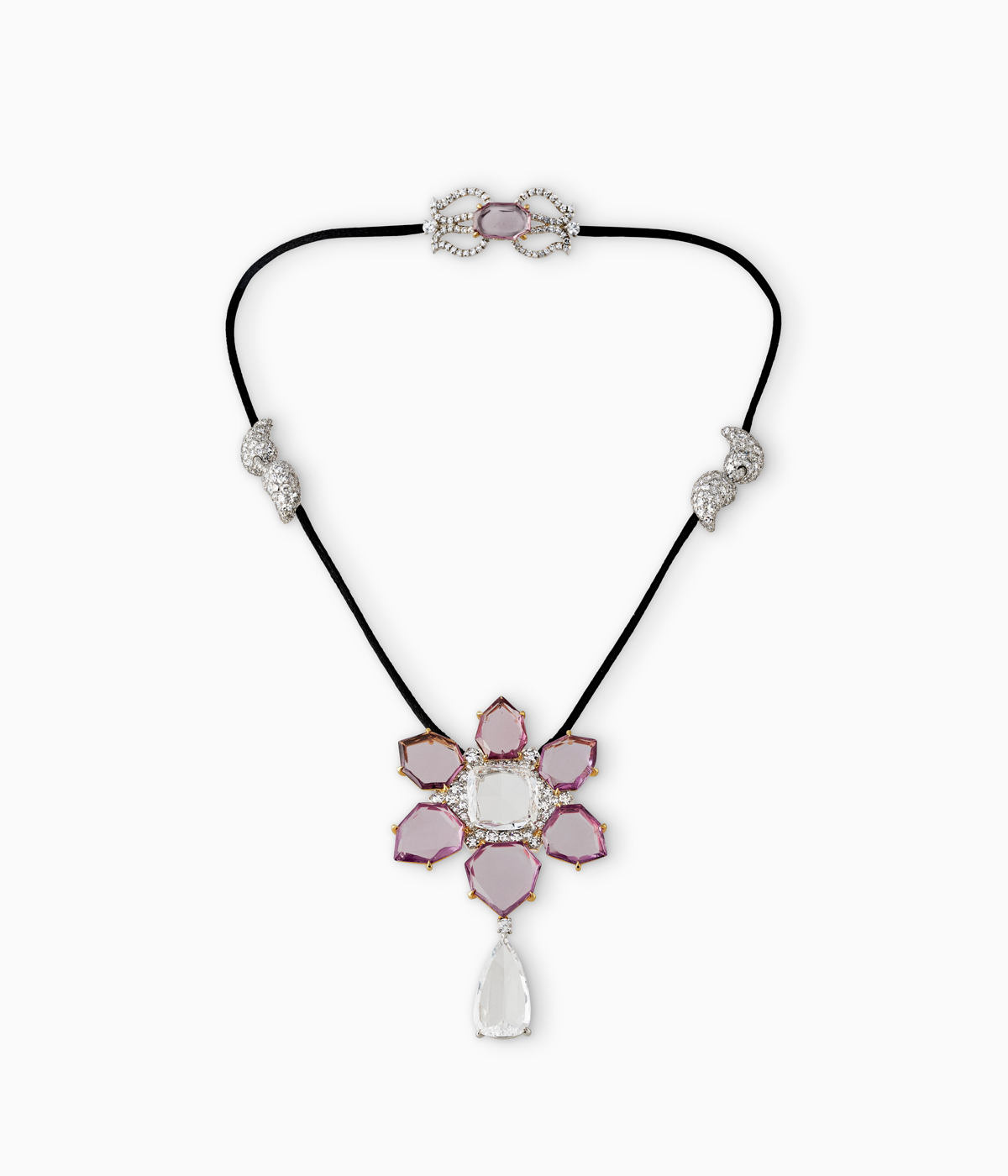
During its golden age, the Mughal dynasty, at its peak in the 16th and 17th centuries, stretched from Kabul, today in Afghanistan, to the borders of the Deccan sultanates, from Gujarat in the west to present-day Bangladesh in the east. It marked an incredible period of artistic achievement, now celebrated in a major exhibition at London's V&A, ‘The Great Mughals: Art, Architecture and Opulence’, which spotlights art, culture and objects produced throughout the prolific period.
Mughal jewellery’s ongoing influence

It marks a significant moment for designers who continue to be influenced by the rich aesthetic of the Mughal Court, most notably for founder of Mayfair-based Santi Jewels, Krishna Choudhary, who continues to work with Mughal stones today. Many jewels in the Choudhary family collection are reminiscent of the jewellery and bejewelled objects throughout the exhibition, and feature an array of stones, from Golconda diamonds to Colombian emeralds and spinels, sapphires and natural pearls.

‘Mughal jewellery was an important part of the Mughal iconography, but it was not the only expression of the emperors' fine taste,’ says Choudhary, who is one of the exhibition’s supporters. ‘The Mughals made India their home, and to ensure they didn’t miss their roots in Persia, their environment was built to resemble paradise, where everything was beyond the imagination of common men. Whether it was a little jewelled ink set, a large jewelled throne, or a tent made out of gold silk, they were decorated with the most exquisite stones and materials. Visitors would get to step into that paradise.’

It is a heritage that has influenced Choudhary's own work, particularly in the tributes he pays to the role of a gem-cutter: ‘These stones are an expression of how a cutter elevated the experience of looking at a true gem from nature, refining, cutting and carving it to the preference of an emperor,’ he says. ‘They are extremely special to me, and I take it as a huge responsibility to bring them into our times in a justifiable manner.’
Choudhary continues to look to these heritage gems in his designs for Santi Jewels today. ‘The traditional jewellery-making in India peaked in the 17th century, and we cannot add to it. However, my passion has always been to reflect the ideology behind these patterns with the best craftsmanship of our times. When the Mughal motifs are reflected in unconventional materials, they strike a chord. The symmetry and geometrical patterns take us back to the Mughal era, but the unconventionality and juxtaposition of gems and materials bring us to the present and make us think of the future.’
‘The Great Mughals: Art, Architecture and Opulence’ is at the V&A from 9 November 2024 – 5 May 2025








